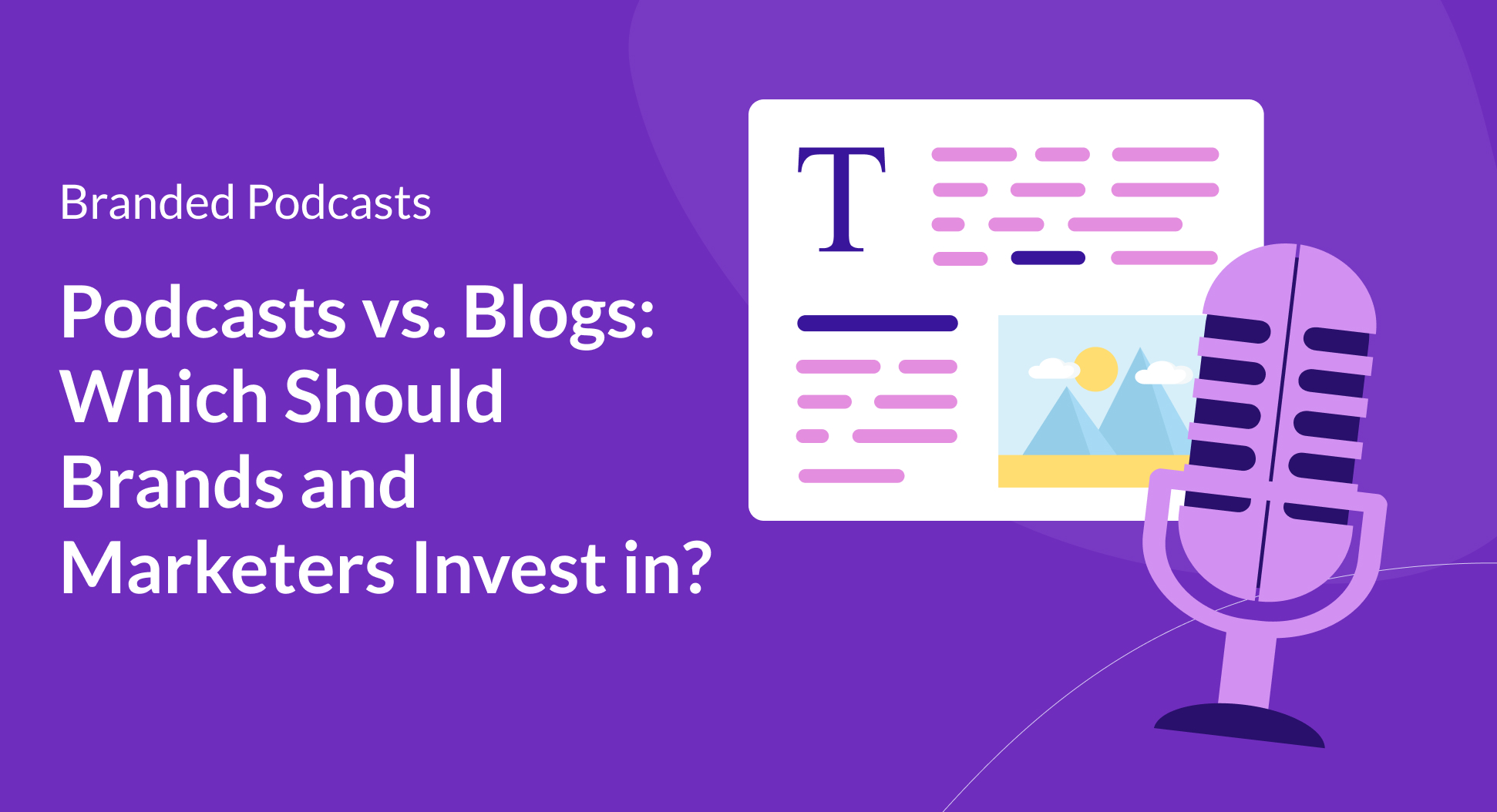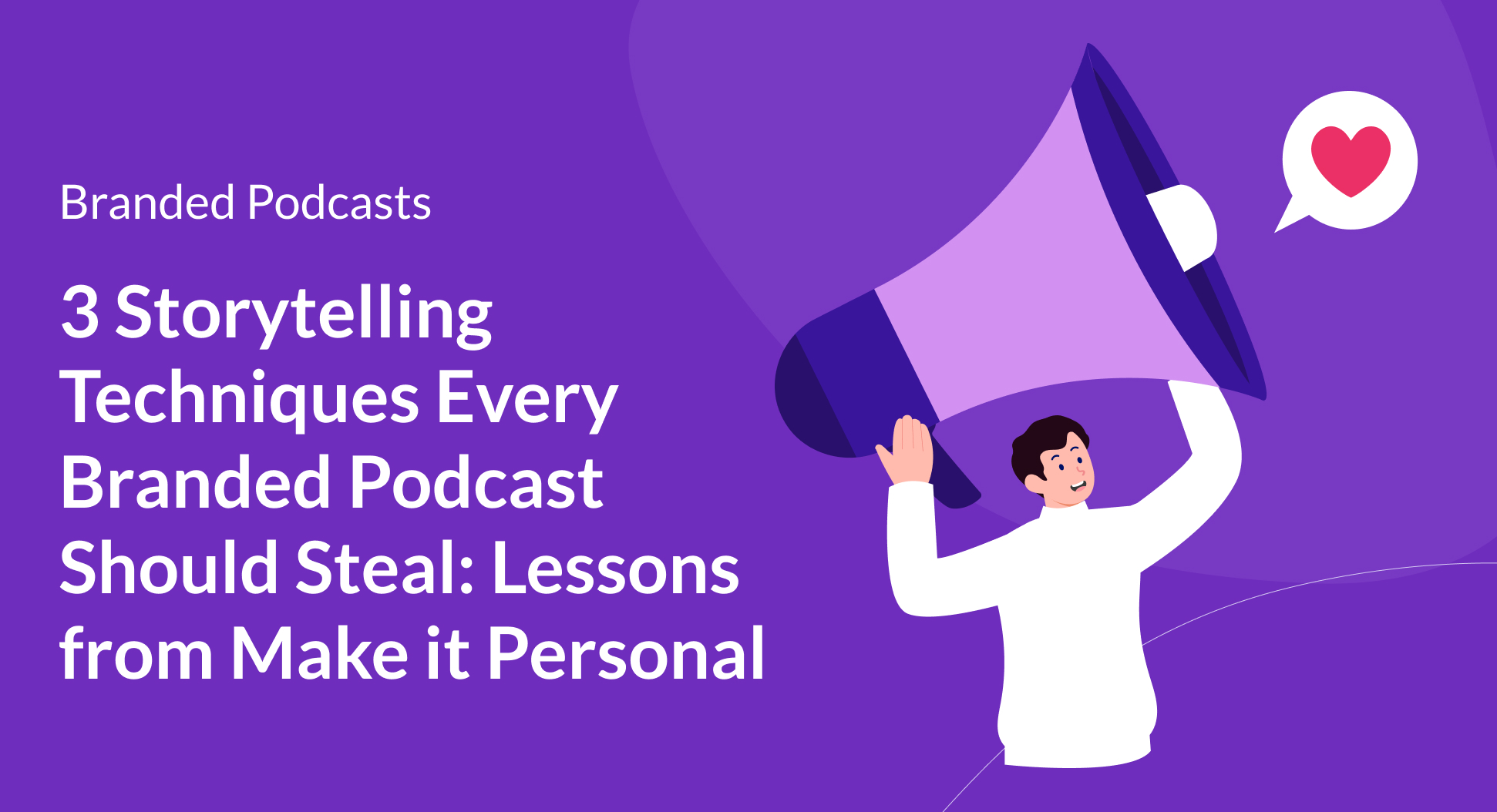Contents
There’s no denying video podcasting has seen a massive rise in popularity in recent years. Some studies have even suggested that in 2023, YouTube took over the top spot as the most popular destination to consume podcasts, ranking higher than both Spotify and Apple Podcasts.
CoHost and Sounds Proiftable’s recent report Sound You Can See found that 64% of podcast listeners believe YouTube to be a better podcast experience compared to audio-only formats. It also found that monthly video podcast consumers are more likely to become weekly consumers, indicating that video content is more engaging than audio-only content.
Plus, The Future of Video Podcasting for Brands report by Riverside found that 85% of companies are already using video for their podcast, 64% of new podcast consumers prefer video-first content, and 75% believe that video will become the new default for recordings.

In other words, video is an important element of the podcasting world that marketers can’t afford to miss out on – unless they want to risk alienating a significant portion of listeners.
If you’re hoping to grow your podcast audience, tap into your desired audience base, and gain visibility for your brand, then you’re definitely in the right place.
In this article, you’ll find a complete guide to expanding your audio podcast into video. We’ll cover how to create a video podcast, its benefits, and more. Let’s dive in!
What is a video podcast?
A video podcast is exactly like a regular podcast, only it includes visuals in the form of a video or still image(s).
According to the Sound You Can See report, 74% of video podcast consumers say that the videos they watched in the past 30 days consisted of the hosts, creator, and/or guests together in a studio. However, the visual component of a video podcast could also look like a Zoom or video call (43%), a live-action video of hosts, creators, and/or guests (23%), a static image (20%) or animations/graphics (15%).
A video podcast can be published on most of the same platforms you would use to publish an audio podcast including Apple Podcasts, Spotify, and YouTube Podcasts. However, the same report found that 63% of those who had watched a video podcast in the last 30 days had watched it on YouTube, so this platform tends to dominate the video podcast space (and recently, perhaps even the podcast space, period).

What are the benefits of video podcasts?
Compared to audio-only podcasts, video podcasts provide several benefits, especially for brands looking to connect with their audience and build trust. If you’re considering investing in a video podcast, some of the positives to consider include:
Higher engagement and consumption rates
There’s no doubt that your audience will find it easier to connect with your content if they’re watching human beings interact with each other, as opposed to just listening to their voices.
As humans, we’re hard-wired for face-to-face connection and reading each other’s facial expressions and body language, so it only makes sense that adding video to your podcast will boost your engagement, draw listeners in for longer, and help you build trust with them.
Increased visibility
Including video with your podcast also brings with it SEO benefits to increase your chances of coming up on a search engine and connecting with new listeners.
Detailed descriptions, tags, and transcripts associated with video podcasts further enhance the likelihood of appearing in search queries. Additionally, high-quality video content tends to attract backlinks, improving domain authority and overall podcast SEO.
More content opportunities
Video podcasts also provide you with more opportunities to be creative with promotional content by creating bite-sized clips for social media apps, especially those that are more visual like TikTok and Instagram. This will help you build a following on those channels and also attract more listeners to the podcast.
Quill Tip: If you’re interested in learning more about how to repurpose your podcast content, check out our complete guide.
Increased credibility and brand recognition
When you introduce video to your podcast, you’re introducing a whole other layer of opportunities to visually represent your brand through production value and set design, build authority and credibility, and foster brand recognition. In other words, video podcasting provides more opportunities to build your brand than audio-only podcasts.
Higher ROI
Like anything in life, with podcasting, you get what you give. If you invest more capital into your podcast, you will ultimately see the payout in a variety of forms including boosted sales and revenue, stronger brand awareness, and much more.
To quickly calculate your podcast ROI, check out CoHost’s podcast ROI calculator.
What goes into creating a video podcast?
To create a video podcast, you’ll need to ensure you have the time, budget, and resources to do it right. You’ll want your video podcast to look professional and polished so you can continue to build a strong brand reputation and credibility in your industry.
If you’re planning on creating your video podcast in-house, you’ll first need to ensure you have the right equipment, which might include:
- Video camera
- Microphones
- Headphones
- Tripod
- Lighting
- Video editing software
- Hosting platform
Once you’ve recorded the podcast episode, use video editing software like Descript, Riverside, or Audacity to trim the video, cut out any mistakes or parts of the conversation you don’t want to include and add transitions. Then, upload the video to your hosting platform as well as any other platforms you want to include, like YouTube.
Creating a video podcast in-house vs. with an agency
The process of creating a video podcast is definitely doable for small teams or even individuals. However, if you have a bit more budget to spare, working with a full-service podcast production agency like Quill will ensure your end product comes out looking polished. This option is pricier, but the ROI will be well worth the extra cost.
At Quill, we specialize in video podcasting, but we also understand the world of podcasting through a marketer’s lens. From this perspective, we’re better equipped to bring your vision to life in a way that captures the attention of your target audience and consistently drives back to your business goals.
“Working with a full-service podcast agency like Quill can help you take your video podcast to the next level. With the popularity of video podcasts skyrocketing, brands can’t afford to miss out on this opportunity to connect with their audiences, but it’s important that it’s done right.”
— Tianna Marinucci, Marketing Manager at Quill.
If you don’t have the resources to make a great video podcast just yet, don’t sweat it. While video podcasts are a great opportunity to connect with your audiences and increase your brand’s online presence, they’re not completely necessary, and audio-only podcasts are still a solid content option that will help you reach the same goals.
Is your podcast ready for video?
Research tells us that video podcasting is a promising avenue for brands when it comes to connecting with audiences. However, it’s not a must-have for all podcasts in 2024, so if you don’t yet have the resources to create one, it’s not going to make or break your podcast’s success.
If you are keen to expand your podcast to video, you can’t cut corners. Creating a polished finished product involves much more than hitting “record” on a video camera, so if you’re unsure about the process, consider partnering with an experienced video podcast agency that can help you create a video podcast you can be proud of.
Reach out to Quill to learn more about our video podcast services.






.png)

.png)




.png)
.png)
.png)
.png)